There's a story folks who recruit medical professionals to Humboldt County like to tell when they're pressed for gory details on the difficulties of their task. Well, they don't like to tell the story (they prefer upbeat accounts), but against their better instincts they eventually do. It involves a physician — an orthopedic surgeon, or maybe she was an ear, nose and throat specialist; nobody seems to recall exactly — who came up to Eureka with her husband to interview for a position.
"They were eating dinner at the Carter House," says former recruiter Andy Jensen, in his telling of the tale, "and one of the professional ladies from the Old Town area, one of the streetwalkers, walked over and stood in front of the window —"
"— and she was trying to proposition the husband," says recruiter Darien George in his version of the story, "and was pulling her shirt up —"
"— and exposed her breasts," continues Jensen. "And they said, 'Nope, we're not moving here.'"
Another recruit bites the dust.
But that was three or four years ago, Jensen hastens to add. It's not the usual welcome a physician candidate receives in Humboldt County, he says. Redwoods, bucolic fields, fishing boats, ocean vistas, boutiques, galleries, small-town friendliness — those greet them, too.
Even so, enticing doctors to move to Humboldt County is hard, and getting harder, say local providers — for various reasons. One provider, in Fortuna, has tried for four years to find even one replacement for her two partners who left. Mad River Community Hospital's recruiters say they used to have "binders and binders of all kinds of candidates" up until three years ago; now they're lucky if they get a handful of candidates. Some independent practices in Eureka say they no longer can afford to recruit new doctors.
Their tales share some common themes. But the job of recruiting a doctor to Humboldt entails myriad variables. In primary care, many blame recruitment troubles on the severe, nationwide drop in primary care physicians coming out of residency programs — there's simply a smaller pool of such doctors to recruit. Blame also falls on a plague of issues inherent in many rural, often isolated regions. And then a few quirks are localized — county-specific, or even practice-specific.
If a doctor does make the jump to Humboldt, studies suggest he or she will jump again within a few years. According to a July 2012 study by recruiting firm Jackson & Coker, more than half of the doctors it surveyed stuck it out in their first job for just one to five years.
This does not bode well for Humboldt County, which harbors an unhealthful share of aging, sick, poor, busted-up residents in a remote region infused with an entitled drug culture.
How do you market that to a fresh young doctor, or an experienced one looking for a change?
Because market we must — we're facing a doctor shortage that providers fear might only get worse.
We Humboldtians are indeed a rather sick and accident-prone lot (in keeping with rural America, in general, according to the National Rural Health Association).
"We have an older population," says Mark Pardoe, a plastic surgeon who is president of Humboldt Medical Specialists, a newish foundation associated with St. Joseph Health System. "We also have a lot of drug use — a lot of meth and heroin use. We have a lot of heart disease and lung disease. We have a lot of people that struggle from a social and mental health standpoint. ... We have a lot of accidents — logging accidents, car wrecks, ATV accidents; there's a lot of bone-breaking here."
He's not exaggerating. The California Department of Public Health's 2013 health status profile of California's 58 counties shows that Humboldt has the highest rate of death in the state overall, and specifically for deaths from all cancers, suicide, stroke, diabetes, chronic lower respiratory disease, chronic liver disease and cirrhosis, accidents, motor vehicle traffic crashes, suicide, homicide, firearm-related deaths and drug-induced deaths. (The data is age-adjusted.)
And we don't have enough doctors — of numerous types, says Pardoe, including primary care, orthopedics, nephrology, OB-GYN, anaesthesiology, general surgery and neurosurgery. This means, among other things, that emergency call at the hospital is divided among fewer doctors who are struggling to get by in smaller practices.
Penny Figas, executive director of the Humboldt-Del Norte Medical Society, says people often call to ask for help finding a doctor. And her tracking of local doctor movements — coming, going, retiring, dying — indicates a shortage. Many of our docs are getting old and retiring, a trend Figas has been tracking for years.
In Humboldt County, more than 60 percent of specialists and 40 percent of primary care doctors are over age 60, says Figas. And while there are about 233 physicians practicing in Humboldt County, so many are working part time that the full-time-equivalent number of physicians is just 181.4.
Some doctors are retiring because they don't want to deal with computers. Under the Affordable Care Act, practices are required to switch to electronic medical records by 2014. Family practitioner Hal Grotke, who bought Redwood Family Practice in Eureka in 2012, says he lost two physicians for that reason.
Other doctors — new and old — have packed their bags and moved to other climes.
Of those still practicing here, many are semi-retired. Others are overworked. Some have joined larger local groups — such as Open Door Community Health Centers or the St. Joseph-affiliated Humboldt Medical Specialists. But many work in independent, smaller practices and, in some cases, are working longer hours, including weekends and evenings, and foregoing vacations.
Allen Mathew, of Redwood Renal Associates in Eureka, told the Journal earlier this year that he is the only private practice nephrologist (kidney doctor) in an area stretching from Grants Pass to Ukiah and Eureka to Redding. He has 800 patients. He's been trying to recruit a new partner since his left for Montana.
Rosa Rangel, an internist at Redwood Internal Medicine in Fortuna since 1995, is fiercely hanging on now as a solo practitioner. She used to have two partners, and together they handled patients in the office for routine care, at the hospital when they were admitted, in other facilities and even at patients' homes.
One partner retired four years ago. Rangel and the other partner tried, in vain, to recruit a replacement.
"The second partner, after two years, said 'I can't do this anymore,'" Rangel says.
He wanted her to cut out the hospital work. Rangel wanted to continue doing everything. So he moved to San Francisco, and Rangel spent the next six months either working or on call 24/7.
"It was wreaking havoc on my personal life," she says. "My husband was getting cranky because he wasn't seeing me. My daughter was 10 when all of this started, and she was very vocal; she said, 'I miss you. You're never home. We never have dinners together anymore.'"
Then doctors from three other Fortuna medical groups stepped in and took on most of her call, cutting it back from every day to just six days a month.
"They saw that I was drowning," she says. "They were wonderful."
She still had to work seven days a week, up until this October when Redwood Memorial (and its sister hospital, St. Joseph Hospital in Eureka) started using hospitalists — doctors who only work in the hospital — to handle call.
It was inevitable, she says. "Probably more than half the physicians in Fortuna are going to be retiring in the next year or two. How do you take care of patients in the hospital if there are no physicians to take call?"
Hospitalists can take up some of the slack, but it might not be enough. In short, we're bleeding docs, and the rest are being run ragged by the increased workload.
Recruiting doctors is expensive. An outside recruiter can cost $25,000 up front, according to Grotke, plus expenses for all the wining and dining. And, of course, hiring a new doctor also costs money. In some cases a new hire is promised a guaranteed income for the first few years in order to establish a patient base.
Some local private practices say they used to get help with their recruitment costs from St. Joseph Hospital. Family practitioner Lee Leer, president of Eureka Family Practice, says that since the hospital developed its own physician group (which he has not joined), it has diverted recruitment funds toward recruiting into that group. "They made it clear to us" they weren't going to help recruit again, Leer says.
Grotke says St. Joseph Hospital quit helping him with recruitment when his last recruit left Humboldt after less than a year — "His husband didn't like the area," says Grotke. "They moved to Las Vegas." The hospital had paid for the recruit's move, given him money for a downpayment on his house; Grotke says his clinic guaranteed the new physician's income. The deal was, if he stayed four years, the loans would be forgiven. The doctor hasn't paid back the money — an amount Grotke can't disclose because he signed a confidentiality agreement — and now Grotke is on the hook for it.
Asked about these claims, David O'Brien, president of St. Joseph and Redwood Memorial hospitals, said in an e-mailed statement, "Our hospitals continue to recruit for our medical foundation, Humboldt Medical Specialists, as well as local private physician practices."
Leer says he can't afford to recruit new doctors. And he doesn't have the pile of doctors' resumes St. Joseph's recruiter used to send over. Two of Leer's doctors work part time, one of whom is close to retiring. Leer isn't sure what his practice will do when it's time to hire another doctor. "We're just burying our heads in the sand," he says.
Even if a practice or group can afford the recruitment, getting doctors to come remains a challenge — sometimes for reasons beyond Humboldt's control.
There is a nationwide shortage, for instance, of primary care doctors — those internists, family practitioners, pediatricians and general practitioners on the front lines of keeping us all healthy. While demand is rising, the number of medical students going into primary care is dropping. Instead, says Vicky Sleight, who works with recruits at Mad River Community Hospital, new doctors are entering specialized fields where they can make more money to pay off their whopping school debt, and where they might also have a chance of a life outside of work. Primary care physicians are the lowest-paid physicians, and yet (in general) they see more patients than most specialists — and their workload is projected to increase as the country's population ages.
It's a trend that sits cockeyed with another one: Today's young doctors apparently don't want to work all the time.
"A lot of people coming out of residency these days, especially young physicians, are looking for a 9-5 job with guaranteed income," says Leer. "They want to be in a large group that can afford to hire employees, pay good benefits, give plenty of time off."
They want to be employees, practicing their craft, not small-business owners dealing with staffing, insurance and Medi-Cal reimbursements and related headaches.
"When you're talking to these young physicians coming out of residency, you tell them they're going to have to take call and they laugh at you," Rangel says.
By 2025, the nation's physician shortage will have increased to 130,000, half of which will be in primary care, estimates the Association of American Medical Colleges.
"We're competing against so many doctors' offices and clinics and hospitals for primary care doctors," says Sleight. "The one that dangles the biggest diamond or shiny thing in front of them, gets them."
So what can rural areas like Humboldt dangle?
Pay? Maybe, if the area can offer higher salaries than urban competitors, as some rural communities have found a way to do. Local providers are cagey about revealing specifics on salaries. One, internist Rangel in Fortuna, said she knows that what she can afford to offer potential partners is as much as $45,000 less than what they'd make in a big city. Plus, rural communities tend to have a higher percentage of patients on Medicare and Medicaid/Medi-Cal. That's a problem because reimbursement rates for these government programs are smaller than those for private insurance — and they keep shrinking. Roughly 70 percent of St. Joseph's patients are on Medi-Cal and Medicare, says John Gierek, a board trustee who oversees the recruitment and retention committee for St. Joseph and Redwood Memorial hospitals.
"The hospital and doctors are not totally covered on those payments," says Gierek. "Combine that with those with no insurance, and you have commercial insurance and philanthropy having to pick up the rest."
The federal government deems Humboldt a "health professional shortage area," so certain health providers, including Open Door Community Health Centers, can offer recruits student-loan repayment programs through the National Health Service Corps. All they have to do is work a set number of years in local clinics. There's a similar state program.
Cost of living? Depends on where you're coming from. Grotke was in Ventura County before he moved here. It was 2006; the median home price there was $600,000. He couldn't afford it. When a recruiter from Humboldt sent him a card saying "California coastal community with affordable housing needs a family doctor," he jumped.
Opportunity for spouse? That's a tough one. Most recruits are married. Their spouses usually are professionals, too. And finding jobs for them here is not easy.
Grotke's wife, an elementary school teacher, had to substitute teach for five years before she landed a permanent job. They stayed because everything else clicked: They love the drizzly weather. He's happily serving on several community boards. And they could afford a house.
Weather? If cold, wet and gray is your thing.
Thomas Hoffman, a family practitioner in Hawaii, twice almost took a job here. In 2009, instead of joining Eureka Family Practice, he accepted a flight surgeon position with NASA's space shuttle program, based in Hawaii. In summer 2012, after that contract ended, Eureka Internal Medicine brought him and his wife out for an interview.
"They put us in a bed and breakfast," he recalls. "We were invited over to a doctor's house. They live in a remote area and we saw three deer as we drove there. We got a tour with a real estate agent to see some areas to live and to understand the area. We had dinner with the other doctors in the practice at a real nice place on the water. They were very good to us. It was very nicely done — not overkill, but classy."
The salary seemed competitive, the cost of living seemed reasonable and he and his wife found Old Town nice and quaint.
But ...
"My wife is from Sweden," Hoffman says. "She doesn't want to go back to the cold."
He was offered a new job in Hawaii, and took it.
Location? Mountains! Trees! Rivers! Ocean! All shiny. As long as you don't mind endurance travel to get to loved ones elsewhere in the country, your spouse can find meaningful work and you don't mind the lack of big-city entertainments.
Rangel says of the hundred internist candidates she interviewed over the past two years, more than half dropped out when they saw where Humboldt really is.
"They say, 'Northern California!'" Rangel says, mock wonder in her voice. "I say, 'Where in California do you think I am?' They say, 'San Francisco.' I say, 'No no no no, look on the map — north.' I tell them I live in a town of 800 — Hydesville. Work in a town of 10,000. We have two stoplights. And they say, 'No.'"
Quality of life? Yes! Or, maybe. Azalea Realty's Michelle Voyles, co-chair of the community health advisory board for Mad River, takes the hospital's recruits on a tour when they come for an interview. She tells them about our diverse and high-performing schools, Humboldt State University, the ocean, the rivers, the beaches, the trails, the farmers markets, the mom-and-pop shops, the state and national parks. She drives them around Eureka, Arcata, Trinidad, Ferndale, Samoa.
"They always ask about the tsunami sign," says Voyles. She tells them about world-renowned earthquake scholar Lori Dengler up at HSU.
They see the homeless people, too. And the layabouts on the Arcata Plaza. And, one time, the guys with the yaks. "I said, 'Well, this is Arcata.' They laughed."
What they don't laugh at, says Karen Thomas, with Mad River's recruitment team, is all the "abandoned buildings and 'for rent,' 'for rent,' 'for rent' as they're driving through Eureka. I think we've lost candidates because of all the empty buildings."
Culture? Are we talking art galleries (thumbs up!)? Or something more, uh, mind-altering?
In 2009, Jennifer and Judd Dawson, both doctors of osteopathy, moved to Arcata fresh out of their residencies in Colorado to work at two of Mad River Hospital's primary care clinics. They were the ones who initiated contact with the hospital, says Jennifer Dawson — they wanted to live in a small town in Northern California, with outdoor activities, good schools for their son, who was 2 at the time, and a low crime rate; Arcata seemed to fit.
Judd went to work in Arcata, and Jennifer was stationed as the sole family provider at Six Rivers Medical Clinic in Willow Creek. She worked there four days a week.
"My first day of work, I walked in and I had some patient tell me, 'This is the pain medication I want.' I said, 'Really?' They're supposed to come in and explain to me what the problem is and then we discuss a plan of care."
And it was like this with many of her patients there, she says. "Providers had been prescribing pain meds to them for a very long time. The patients didn't want to get off of them." And they refused to do physical therapy or other pain management besides drugs.
"A lot of patients gave me pushback," she says. "They would argue with me and give excuses." Down in Arcata, says Jennifer, an elderly patient told her husband she sold her meds to supplement her social security, and another one threatened Judd's staff because he wouldn't give him narcotics. Both Dawsons, at different times, filed police reports, she says.
"It wasn't a partnership to get people better," she says. "They expected me to be their drug dealer."
Most of her patients also asked her about getting medical marijuana, she says; in her Colorado practice, it's a rare request.
"As we learned over time, that is how it works all over Humboldt County," she says. "It wears on you when you're trying to do the best for people and they don't care, they just want to do what they want. It sucked the joy out of my job."
Finally, they'd had enough. "We took a short sale on our house and screwed our credit to get out of there," says Jennifer. "We wanted out."
Several local recruiters and providers we talked to said the marijuana culture is a big doctor deterrent.
Maybe recruitment efforts here need to take another approach, or at least add more tactics. Andy Jensen says it's not actually that hard — he's recruited dozens of doctors to Humboldt, he says, including for St. Joseph Hospital and, more recently, Eureka Internal Medicine where he has been the practice manager (he starts a new job in mid-November as the north coast regional manager for Partnership HealthPlan, a new Medi-Cal provider).
You just have to cast a wide net. And, he says, he used to prepare recruits beforehand, so they were not shocked by streetwalkers and hippies.
"I tell people, 'We're going to put you up at the Carter House,'" he says. "'The bad news is, the Carter House is in one of worst neighborhoods in town. The good news is, that's one of the worst areas in town.'"
Get it? Folks from the big city would.
Herrmann Spetzler, CEO of Open Door, thinks recruiting has to be shaped — stretch that net into a hook and fling it at specific targets. For example, he says, Humboldt providers should be recruiting the older doctors — because young ones need mentoring — in less traditional ways.
"The carrot is solely the community when you are trying to [recruit] a 45-year-old doctor," says Spetzler. "We tend to stick with professional journals, or headhunters, to recruit. I'd like to propose we run ads in the equivalent of Field & Stream or Backpacker Magazine or Sea Kayaker Magazine."
As for those young doctors, something has to entice them to stick around once their loans are repaid. "National statistics show that very many young people will return to where they went to high school for their permanent place of practice," Spetzler says. "Often that has to do with extended family." Young doctors often have young children, and grandparents wheedle the doctors back home.
"I think what the community needs to do is to adopt a recruitment program for grandparents," Spetzler says. "If we could get the grandparents to move here, and give them a great place to retire, then we can keep these young recruits."
Spetzler's other big idea is to start a resume exchange with other companies and organizations who hire professionals. "So when HSU is hiring someone in their administration, or a professor, the spouse's resume goes into a resume pool that all of us looking for educated staff would go to first — before we go out and look outside the area."
If we can't entice the extended families to up stakes for Humboldt, then at least maybe we can make their travels less frustrating. "The county needs another airline," says Pardoe, with Humboldt Medical Specialists. "That's the big challenge."
And to make everyone's life more fun, Penny Figas says the medical society is hosting more social events to connect doctors and their families to others — especially primary care docs, because they spend less time in the hospital on call now that there are hospitalists for that. Events include membership meetings, Friday beer rounds at different establishments and "walk with a doc" programs (on nature trails).
Finally, the hospital foundation and the independent practices must sort out their differences, says recruiter Darien George, who is managing partner at the executive search firm Mackenzie Eason. He used to recruit for St. Joseph. He says when the hospital was undergoing a lot of regime changes, CEOs and such coming and going, it made everyone look bad to recruits. Besides, he says, there aren't enough candidates to compete for, and new doctors should have a choice here of what type of model they want to work in. Maybe they want the security of the hospital's big foundation. Maybe they want to be a scrappy country doc.
"The best way to approach it is to have multiple avenues to recruit in," George says.
If that all happens, maybe we'll get more doctors — specifically more doctors like Leer, Grotke, Pardoe and Rangel. The ones who stick around.
The key to such longevity may be as simple as loving this rural variety of hard work. Rangel works with patients in the hospital, works in the office, makes house calls, goes to nursing homes and assisted living facilities. "You're a rural physician and that's incredibly fulfilling," she says. "I have had the most fun in my career since I left Chicago. I love, love, love my practice. I love running into my patients in Safeway — they tell you how to can tomatoes, tell you how to embroider correctly, take you fishing, bring you crab, teach you how to fix your diesel engine."
A doctor like that probably won't faint if some lady bares her bosom in the window of the Carter House.
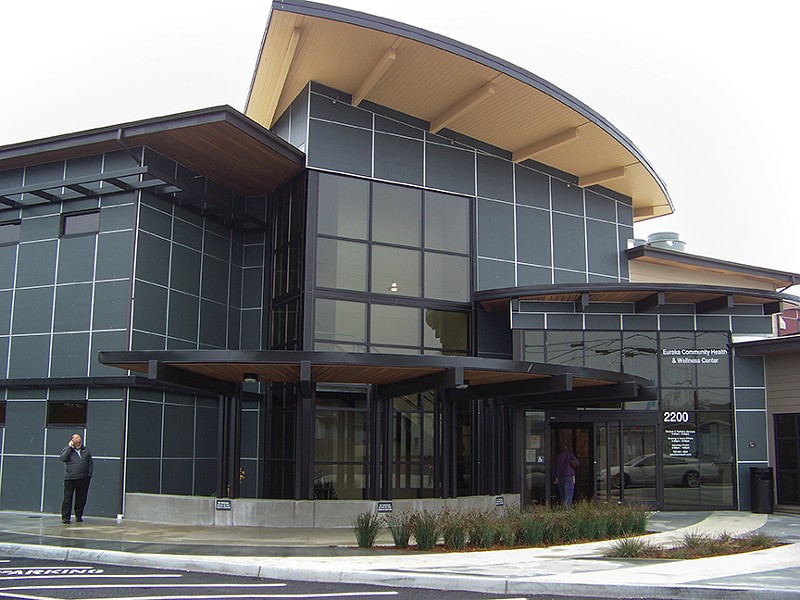

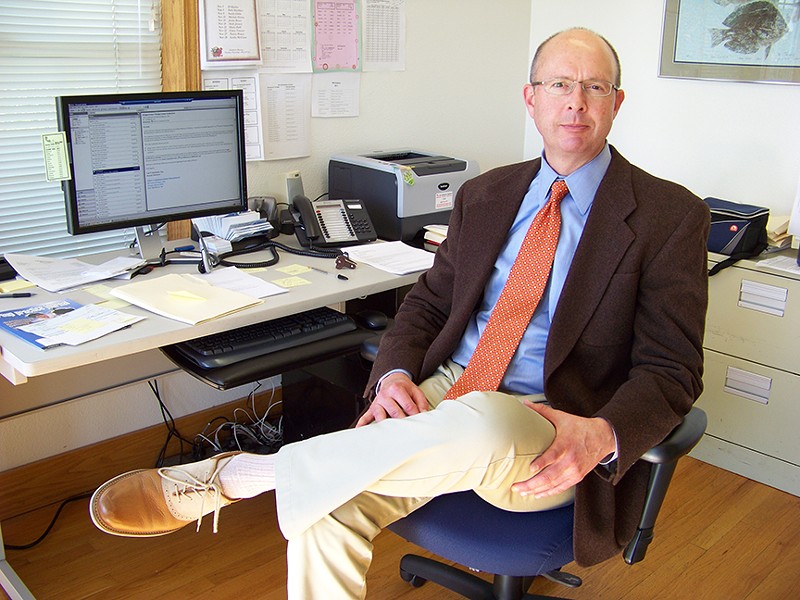

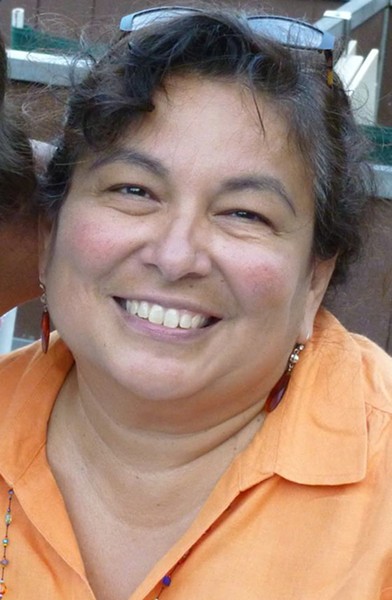
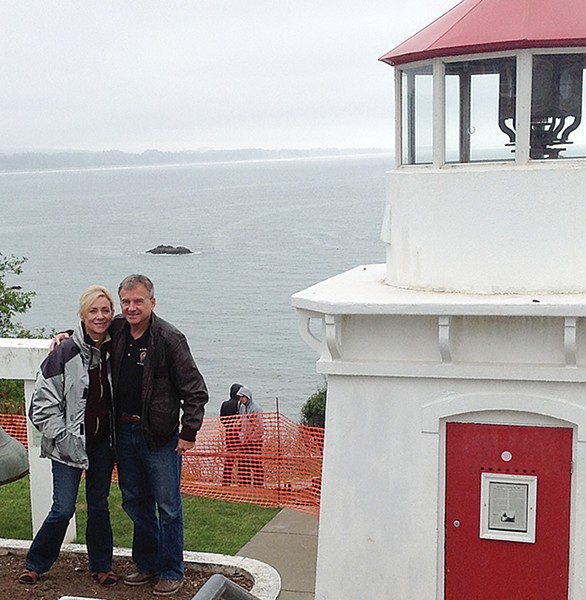
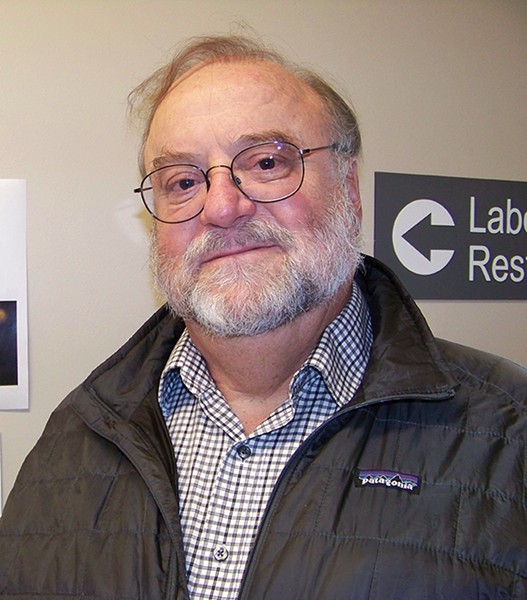



Comments (10)
Showing 1-10 of 10